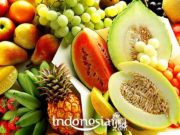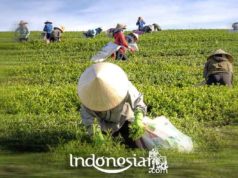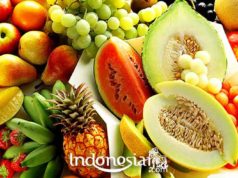Pecel is usually used for breakfast and lunch, providing energy and good nutrition for a full day’s activities. This stewed vegetable dish drenched in peanut sauce cannot be separated from the life of the people of Central Java and its surroundings. “According to Babad Tanah Jawi, the origin of pecel is said to be served in the Yogyakarta area. Dipecel means the leaves are boiled and then squeezed out of the water,” said gastronomist from Gadjah Mada University, Murdijati Gardjito, when contacted by KompasTravel, Thursday (22/2/2018 ).
Murdijati told Babad Tanah Jawi that at midday Sunan Kalijaga met Ki Gede Pamanahan on the river bank. Ki Gede Pamanahan served a plate of vegetables with chili pecel and rice and other side dishes. Sunan Kalijaga then asked “What is this dish?” So Ki Gede Pamanahan answered, “Puniko ron ingkang dipun pecel,” which means “These are leaves that are boiled and squeezed the water”.
Usually dipecel vegetables in the form of spinach, kale, sweet potato, cassava leaves, beluntas leaves, gotu kola leaves, kecombrang, pods, long beans, winged bean, sprouts. Pecel ingredients are generally found in yards, rice fields, sometimes even growing wild on the side of the road. As a flavor enhancer, there is a pecel sauce that is poured over the boiled vegetables. The pecel sauce made from refined peanut crushes has a sweet, sour, spicy and savory taste.
Unlike the Gado-Gado and Karedok sauce that you have to make when you want to eat it, sambel pecel is more practical. Can be stored and eaten at a later time. “This pecel sauce develops in various regions. Some have the taste of kaffir lime leaves, some have the taste of kencur, some have a high sweet and sour taste,” said Murdijati. Each region has its own pecel characteristics. For example in Yogyakarta and around, pecel is served with tempeh and bacem tofu. In Solo and Madiun, pecel is served with karak crackers. Murdijati mentioned Pecel is a symbol of simplicity and travel. One proof of this is that pecel is a dish that is most often found along train trips. He is eaten by various circles of society. Sold at street vendors to five star hotels.
Behind its simplicity, pecel is rich in nutrients that nourish the community. “Actually, eating pecel is part of building health because vegetables are a good source of dietary fiber. Meanwhile, cooking leaves for a while is a way for humans to make it easier to swallow their food so that it is easier to digest,” said Murdijati.
Source :Kompas


































